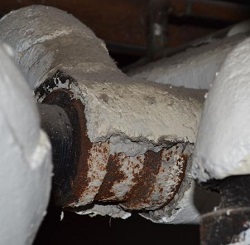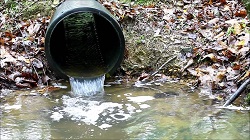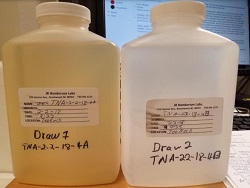Alert: DMAVA offices are closed Wednesday, 3/7/18, due to inclement weather conditions.
(Close Alert)
Restoration
Introduction
~Restore and Maintain Contaminated Waste Sites Under National Guard Stewardship~
NJARNG facilities must conform to all applicable Federal, State, local, and Department of Defense (DOD) requirements for the cleanup of contamination on Army installations and formerly used defense sites (FUDS). Waste sites include pollution from contaminants such as petroleum, oil, lubricants (POC), DOD - unique materials, Hazardous Waste, low-level radioactive materials and low-level radioactive wastes.
Under the army regulation for environmental enhancement (AR 200-1) the NJDMAVA Environmental Quality Control Committee (EQCC) has been established to advise all NJARNG sites on their specific environmental issues, priorities, policies, strategies, and programs. Using the Installation Restoration’s four step Program (IRP), NJDMAVA is able to assess site damage and use proper remediation techniques.
The restoration and remediation of contaminated waste sites remove the risk to human health or the environment. NJARNG facility contamination not only pose as a threat to surrounding environments but also nearby communities.
Below are examples of sites that have been restored through the NJARNG.
Asbestos Management
Asbestos is a strong naturally occurring fibrous mineral with a high fire resistance. Due to its resilience, asbestos was used for many projects such as building materials, friction products and heat-resistant fabrics.
However, asbestos containing material (ACM) can be hazardous if not taken care of properly. If ACM is disturbed, asbestos fibers separate or become friable.
Asbestos is managed under facility specific Asbestos Management Plans (AMPs). At each NJARNG site, inspections assess for the amount, type, condition, and location of all suspected ACM.
Once asbestos is located, the facility must comply with the Master Asbestos O&M Plan and AMPs to properly remove the hazardous material from the site.
Wastewater Management
Wastewater is observed as storm water runoff from operation, industrial or construction activities to a water body or as a sanitary and industrial wastewater discharge to a POTW, FOTW, non-agency-specific treatment facility or a receiving stream.
Wastewater is heavily monitored and controlled by many regulations. Under the NJ Water Pollution Control Act, waterways affected by NJARNG sites are to restore, enhance and maintain state waters.
To combat storm water runoff, NJARNG sites use SESCA protocol to reduce soil erosion and sedimentation. Sanitary or operational wastewater is required to be permitted at each site and should never be discharged directly to a waterway.
Water Quality Management
In order to provide safe drinking water to facility staff, each NJARNG site must meet the standards that are set by the New Jersey Safe Drinking Water Act (NJSDWA) and federal SDWA.
Routine water sampling is conducted to analyze the lead and copper concentrations for unfiltered water systems, such as water fountains, break room sinks and kitchen sinks.


